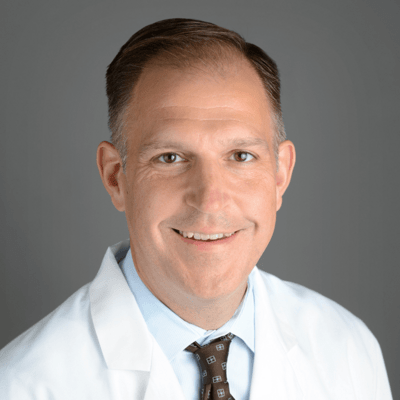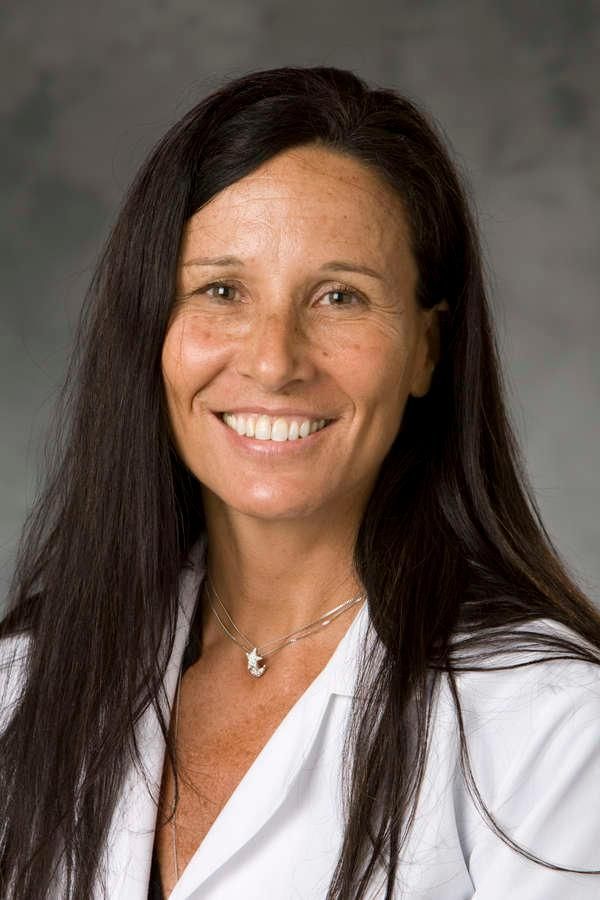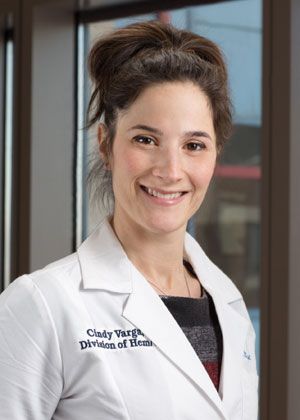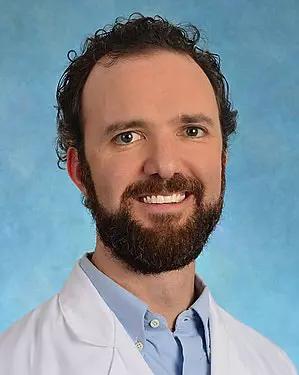Recap: Recent Research in Multiple Myeloma
At an Around the Practice program in Charlotte, NC, experts spoke about the most recent research in multiple myeloma.
Peter Voorhees, MD
Atrium Health Levine Cancer Institute
Charlotte, NC

Cristina Gasparetto, MD
Duke University School of Medicine
Durham, NC

Cindy Varga, MD
Tufts University School of Medicine
Boston, MA

Sascha Tuchman, MD, MHS
University of North Carolina Health
Chapel Hill, NC

At an Around the Practice® program hosted by CancerNetwork®, experts spoke about the most recent advances in multiple myeloma. The discussion was led by Peter Voorhees, MD, professor of medicine and chief of the Plasma Cell Disorders Division at the Atrium Health Levine Cancer Institute in Charlotte, North Carolina.
Panelists included Cristina Gasparetto, MD, professor of medicine and lead of the Multiple Myeloma Program at the Duke University School of Medicine in Durham, North Carolina; Cindy Varga, MD, medical oncologist and assistant professor at the Tufts University School of Medicine in Boston, Massachusetts; and Sascha Tuchman, MD, clinical associate professor, director of the University of North Carolina Multiple Myeloma and Amyloidosis Program at the University of North Carolina in Chapel Hill, North Carolina.
Recent Research in Multiple Myeloma

Vorhees: What was the study design of the DETERMINATION trial [NCT01208662] presented at the 2022 American Society of Clinical Oncology [ASCO] Annual Meeting, and what were the efficacy outcomes?
Gasparetto: DETERMINATION was a phase 3 multicenter randomized study [testing the efficacy of] induction chemotherapy with bortezomib, lenalidomide, and dexamethasone [RVd] followed by ASCT and then an additional cycle of consolidation maintenance of RVd until [disease] progression, compared with continuation of therapy with [RVd] and stem cell collection [without] transplant and then maintenance until progression. The results of this study were highly anticipated, and they showed the superiority of the transplant arm in terms of progression-free survival [PFS].1 The median PFS in the RVd arm was 46.2 months (95% CI, 38.1-53.7) vs 67.5 months (95% CI, 58.6-not reached) in the transplant arm. The overall survival (OS) was similar.
[Notably], this study was a bit different from the earlier IFM [2009] trial [NCT01191060].2 The 2 had the same design initially, but [there were several differences]. Patients in the IFM [trial] remained on maintenance for only 1 year, [whereas] in DETERMINATION, patients remained on maintenance until progression, which translated to a longer PFS. Another important difference was that roughly 20% of patients proceeded to transplant [in DETERMINATION] vs roughly 75% in IFM. The IFM study compared [the efficacy of] receiving a transplant earlier vs later, [whereas] DETERMINATION compared receiving a transplant vs not receiving one. Surprisingly, IFM showed higher MRD after transplant, and that the patients achieving MRD with continuation therapy were not doing as well.2 In DETERMINATION, it didn’t matter whether patients achieved MRD with continuation therapy or with a transplant, all of them performed quite well. [These were just some of the differences].
As a result, ASCT remains a good option for patients, particularly those with high-risk diseases, but it opens a can of worms: “Should we offer transplants to all patients with myeloma?” [It also has] some other issues, [namely] an increase of acute myeloid leukemia secondary myelodysplasia, which demands careful consideration. Regardless, these were very important results for patients who are ineligible for transplant.
Voorhees: What are your thoughts about this improvement in PFS? Is this evidence definitive?
Varga: I’m convinced it is [because] the 21.3-month PFS is clinically significant. [I’m beginning to see] a lot of older patients with this disease, and we often don’t have a long period of time to offer transplants. Sometimes, an upfront transplant, hitting the disease hard, and providing them this PFS advantage immediately is important because we might not be able to offer it later down the line.
Voorhees: Importantly, [DETERMINATION] also included a breakdown between standard-risk cytogenetic patients and high-risk cytogenetic patients.
Tuchman: For these patients, even if [this treatment] isn’t yet proven to prolong OS, there’s still a quality-of-life benefit in the sense that 2 years longer remission on lenalidomide maintenance is much easier than [a return to] full induction chemotherapy after relapse, which would bring patients back to the clinic much more often. This is why I discuss this factor with patients as well. It’s much nicer to be on lenalidomide maintenance vs re-induction.
Voorhees: What were the results from the final analysis of the GRIFFIN trial4 [NCT02874742] presented at the 2022 International Myeloma Society Annual Meeting?
Tuchman: GRIFFIN is one of the most important recent multiple myeloma trials—it is practice-changing. It’s a randomized phase 2 study [examining about] 107 patients. All patients were given RVd and then randomized 1:1 to receive or not receive daratumumab. They received 4 cycles of chemotherapy, and all of them proceeded to ASCT, after which they received 2 more cycles of their pre-transplant induction regimen followed by maintenance therapy. Patients in the non-daratumumab arm received lenalidomide maintenance and patients in the daratumumab arm received 2 years of daratumumab. Much like DETERMINATION, this is a highly anticipated study.
The data have been emerging gradually; as of last year, it was already known that the MRD results were better in the daratumumab arm. Roughly 65% of patients were MRD-negative in the daratumumab arm vs roughly 30% in the control arm, a more-than-doubling of MRD negativity rates, which we know now is a very important prognostic marker.3 A lot of us in the multiple myeloma community were excited, not quite willing yet to substantially change our [standard treatments], but certainly excited.
What changed this year, is that the early PFS data was released…and showed [improved outcomes] several years out from the start of therapy [with daratumumab]. The 4-year PFS rate, for example, was 87% for patients in the daratumumab arm vs roughly 70% for patients in the RVd arm, with a hazard ratio of roughly 0.45.4 This is a significant improvement in PFS. The OS data is too immature to comment on at this point, but the improvement in PFS has made a lot of headway in the multiple myeloma community. Many institutions, including ours, have adopted daratumumab plus RVd as the standard induction regimen for patients proceeding to transplant.
Varga: The data is just so clear at this point. The addition of daratumumab doesn’t increase toxicity much but significantly increases the depth of response and PFS. There’s a separation of the survival curves. For my practice, I’ve been introducing this quadruplet therapy upfront.
Voorhees: Can you tell us about the MASTER trial5 [NCT03224507]?
Varga: The MASTER trial had a very interesting design. This was a phase 2 single-arm multi-center trial [examining] patients with newly diagnosed multiple myeloma. There were 3 [participant] groupings: patients with standard risk disease lacking any high-risk cytogenetics, patients with high-risk disease containing 1 high-risk cytogenetic mutation, and patients with ultra-high-risk disease containing 2 or more cytogenetic mutations. The primary end point for this study was MRD negativity, and patients received daratumumab along with carfilzomib [Kyprolis], lenalidomide, and dexamethasone [KRd]. They had 4 cycles of this treatment followed by ASCT, and their treatment [after transplant] was dictated by MRD status. If they were MRD-positive, they received 4 more cycles of consolidation therapy with daratumumab plus KRd and could receive a further 4 if still MRD-positive, for a maximum of 8 post-transplant consolidation cycles. If they were still positive after these 8 cycles, they were administered maintenance lenalidomide. If at any point they were consecutively MRD-negative, they halted therapy and were simply monitored.
The results were interesting. Roughly 80% of patients achieved an MRD-negative state at 10-5, including many in the ultra-high-risk grouping. Roughly 65% of the patients achieved MRD negativity at 10-6. [Moreover], roughly 70% of patients achieved 2 MRD-negative states, including many in the ultra-high-risk grouping.5 This was [thereby shown to be] a very effective treatment regimen, even for the ultra-high-risk population.
Notably, at the 2-year mark, the standard-risk and the high-risk groups performed quite well, with over 90% still in a disease-free state. The PFS rate in the ultra-high-risk group was roughly 60%, a [reduced] response. [Moreover], 12 months after stopping therapy, patients who had achieved 2 MRD-negative states in the standard-risk and high-risk groups didn’t relapse or experience any progression. However, roughly 30% of these patients in the ultra-high-risk group did.
In summary, this study showed daratumumab plus KRd to be a very effective treatment regimen, but it also raises the question of whether we should halt therapy for patients with ultra-high-risk disease even if they do achieve an MRD-negative state because they are [often] seroconverting to MRD positivity.
Voorhees: In treating a patient with revised diastasis stage I hypodiploid disease lacking high-risk cytogenetic markers, would you stop therapy if they were MRD-negative after induction chemotherapy and transplant, given these data?
Tuchman: If you had 10 myeloma experts in a room, you’d get 10 different answers to this question. A few years from now [there might be more consensus], but [for now] it’s a very good question.
I don’t make MRD-guided decisions at this point. We know MRD to be an incredibly powerful prognostic tool…but we have no data at this point, even from MASTER, to determine whether we should use MRD data for decision-making.
This means a study [is needed] examining patients who are MRD positive [to determine whether] intensifying therapy improves long-term outcomes [for them]. In the situation you described, a separate study is needed examining patients who have achieved MRD negativity after induction followed by transplant [to ensure] they’re not harmed by halting therapy. We have decades of [collective] therapeutic experience showing maintenance therapy to be effective.
These studies are extremely promising, but [have only produced] very early results so far and [have not yet produced] any mature OS data. Most of them, like MASTER, are not comparative [studies]. It’s therefore too early to be making decisions based on MRD status.
That’s why studies like S1803 [DRAMMATIC; NCT04071457] are incredibly important. This is an ongoing post-transplant maintenance study administered by the SWOG Cancer Research Network in which MRD-positive patients are randomized to either lenalidomide maintenance or lenalidomide daratumumab maintenance, with OS as the primary end point.
Voorhees: How would you decide between RVd and KRd plus dexamethasone regimens for particular patients?
Gasparetto: I love that the MASTER trial differentiated between the many types of myelomas—between the standard, high-risk, and double-hit, ultra-high-risk myelomas, which clinicians are increasingly aware of.
For patients with high-risk disease, MRD should not guide our decisions. These patients achieve MRD very quickly, but they also relapse very quickly.
The FORTE trial [NCT02203643] showed the benefit of carfilzomib for patients with ultra-high-risk disease, so I’m trending toward a regimen [including carfilzomib] for patients with double-hit disease. In the trial, the real difference [occurred] after the second randomization, between patients treated with carfilzomib plus lenalidomide maintenance vs lenalidomide alone. Carfilzomib was very important regardless of the setting. Daratumumab plus RVd is the standard of care in most of the United States, but my go-to therapy for ultra-high-risk patients is daratumumab plus KRd.
Voorhees: How do you choose between a triplet and quadruplet treatment regimen? Are you administering quadruplets consistently?
Varga: For transplant-eligible patients, I commonly use a quadruplet given all the recent data. [Quadruplet therapy results in] very little added toxicity, wonderful PFS benefit, and amazing rates of MRD negativity. I don’t even discuss triplet therapy with patients anymore, I discuss quadruplet therapy. [The real choice is between] daratumumab plus KRd vs daratumumab plus RVd, and I allow comorbidities to guide my decision between those.
Voorhees: Another important decision is whether to perform ASCT upfront. The overwhelming majority of patients who have undergone induction therapy, even quadruplet therapy, are likely to be MRD-positive at the completion of those 4 cycles of therapy, and they’re unlikely to show a CR at that point. It’s [therefore] impossible to make that decision early on except in a very small percentage of patients who have very quick and deep responses.
Going into transplant, any response to treatment can be considered successful induction therapy. Views on this question differ, but for me, any patient who shows at least a partial response should be considered for stem cell mobilization and upfront transplant. Some folks prefer a deeper response—a very good partial response or better—but restricting the number of cycles given in the induction phase before stem cell mobilization is important. A partial response or better after 4 cycles is a [good minimum standard] for transplant.
Transcript edited for clarity.
References
- Richardson PG, Jacobus SJ, Weller E, et al. Lenalidomide, bortezomib, and dexamethasone (RVd) ± autologous stem cell transplantation (ASCT) and R maintenance to progression for newly diagnosed multiple myeloma (NDMM): the phase 3 DETERMINATION trial. J Clin Oncol. 2022;40(suppl 17):LBA4. doi:10.1200/JCO.2022.40.17_suppl.LBA4
- Attal M, Lauwers-Cances V, Hulin C, et al; IFM 2009 Study. Lenalidomide, bortezomib, and dexamethasone with transplantation for myeloma. N Engl J Med. 2017;376(14):1311-1320. doi:10.1056/NEJMoa1611750
- Anderson LD Jr, Kaufman JL, Laubach JP, et al. Daratumumab plus lenalidomide, bortezomib, and dexamethasone (D-RVd) in transplant-eligible newly diagnosed multiple myeloma (NDMM) patients (Pts): a subgroup analysis of Griffin. Blood. 2021;138(suppl 1):2723. doi:10.1182/blood-2021-148533
- Daratumumab (dara) + lenalidomide, bortezomib, and dexamethasone (RVd) in patients (pts) with transplant-eligible newly diagnosed multiple myeloma (NDMM): final analysis of GRIFFIN. Presented at 19th International Myeloma Society Annual Meeting; August 25-27, 2022; Los Angeles, CA; abstract OAB-057. Accessed October 31, 2022.
- Costa LJ, Chhabra S, Medvedova E, et al. Daratumumab, carfilzomib, lenalidomide, and dexamethasone with minimal residual disease response-adapted therapy in newly diagnosed multiple myeloma. J Clin Oncol. 2022;40(25):2901-2912. doi:10.1200/JCO.21.01935
Newsletter
Stay up to date on recent advances in the multidisciplinary approach to cancer.